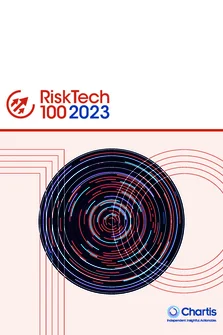This report provides an independent evaluation and description of Bloomberg’s leading practices and competitive position. Our analysis is based on information in the Chartis report MiFID II Reporting Solutions 2017, and our corresponding FinTech Quadrant™.
The report also includes brief coverage of:
- The main demand-side trends in this market, with an analysis of the key business and regulatory challenges.
- The supply-side dynamics, with a focus on the vendor landscape.
For Financial Institutions (FIs) across the financial spectrum, the Markets in Financial Instruments Directive II (MiFID II) represents a significant change. Its drive to increase transparency across the industry is forcing FIs to transform their business processes and technology. The regulation is also impacting several areas of FIs’ operations, requiring them to focus more on pre-trade transparency, best execution and post-trade reporting. For FIs, this will create a multitude of new challenges – not least in the amount of disparate data they will have to access and analyze, often in tandem with other
complex system adaptations demanded by other regulations. These include testing requirements and accounting standards such as International Financial Reporting Standard 9 (IFRS 9) and the European Banking Authority (EBA) stress tests in Europe, and Current Expected Credit Loss (CECL), Comprehensive Capital Analysis and Review (CCAR) and Dodd-Frank Act Stress Tests (DFAST) in the US.
FIs can address these challenges by focusing on their data management and enriching the quality of the data they use for their reporting. Smaller FIs – in many ways the ones that are struggling most with compliance – can also learn valuable lessons from their larger counterparts, many of which have had to prepare some way in advance.
Nevertheless, overconfidence and unrealistic expectations have affected the general progress of MiFID implementation. Regulators – themselves increasingly affected by geopolitical forces – are likely to forgive a lack of full compliance to some extent, but will continue to penalize those FIs that simply don’t make the required effort to comply.
Those FIs that have built or adapted systems for MiFID II tend to take their own approach to finding the right solution – and a fragmented, almost saturated market could cause problems for many vendors attempting to offer distinct solutions. The growing importance of Project Sentinel – a collaboration of FIs aiming to create a unified system to tackle the implementation challenges – could also pose a serious threat to more established vendors, by giving FIs themselves more control over their systems and solutions.
Only users who have a paid subscription or are part of a corporate subscription are able to print or copy content.
To access these options, along with all other subscription benefits, please contact info@risk.net or view our subscription options here: http://subscriptions.risk.net/subscribe
You are currently unable to print this content. Please contact info@chartis-research.com to find out more.
You are currently unable to copy this content. Please contact info@chartis-research.com to find out more.
Copyright Infopro Digital Limited. All rights reserved.
As outlined in our terms and conditions, https://www.infopro-digital.com/terms-and-conditions/subscriptions/ (point 2.4), printing is limited to a single copy.
If you would like to purchase additional rights please email info@chartis-research.com
Copyright Infopro Digital Limited. All rights reserved.
You may share this content using our article tools. As outlined in our terms and conditions, https://www.infopro-digital.com/terms-and-conditions/subscriptions/ (clause 2.4), an Authorised User may only make one copy of the materials for their own personal use. You must also comply with the restrictions in clause 2.5.
If you would like to purchase additional rights please email info@chartis-research.com



